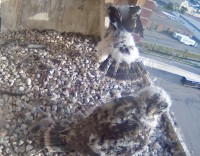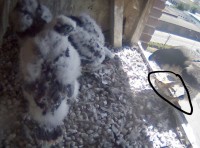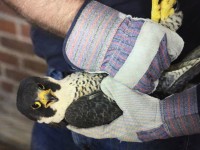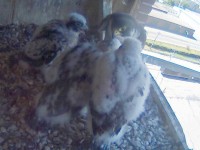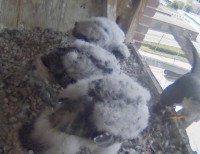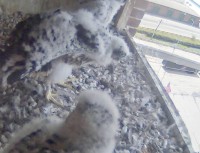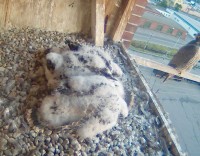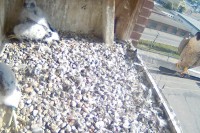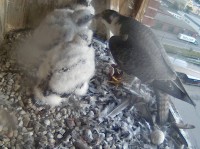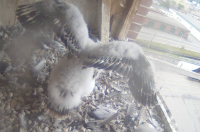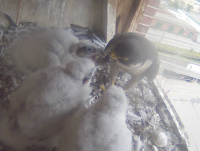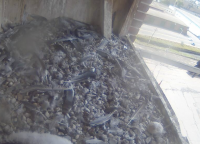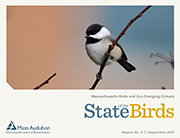Day 31: increasingly darker!
June 13, 2018 in In the Nest Box, lawrence peregrines
The peregrines started the day under fair skies, winds from the SW at 8MPH, and temp at 59F. The forecast for today calls for increasing clouds and scattered showers, mainly after 2pm. The temps high near 77. Southwest wind around 10 mph, with gusts as high as 23 mph. Chance of precipitation is 30%.
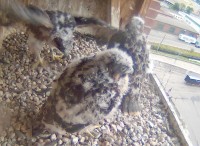 By day 31, the chicks often become actively interested in losing their down, preening themselves and sometimes ending up with feathers stuck to their beak as a result. From the back they are looking increasingly dark, with the wing feathers approaching full length. In this photo, the chick in the back left corner is wing flapping, the others have been preening. The darker feathers are coming in all over, and the down is decreasing rapidly!
By day 31, the chicks often become actively interested in losing their down, preening themselves and sometimes ending up with feathers stuck to their beak as a result. From the back they are looking increasingly dark, with the wing feathers approaching full length. In this photo, the chick in the back left corner is wing flapping, the others have been preening. The darker feathers are coming in all over, and the down is decreasing rapidly!
Around this time, a nestling can rip up a prey item quite well, and at 39 days it soon demolishes even intact prey items. At this stage, pray is usually left intact for the young to deal with, though the parent may still break food up into smaller pieces. There is, however, a considerable overlap between parental and self-feeding, and adults will present young with pieces of torn-up prey until they fledge, especially if nestlings solicit.
Literature cited:
Ratcliffe, D. 1993. The Peregrine Falcon. 2nd ed. Carlton, England: T. and A. D. Poyser.
The Canadian Peregrine Foundation, Peregrine Falcon Development – Age Guide; http://www.peregrine-foundation.ca/info/ageguide.html
